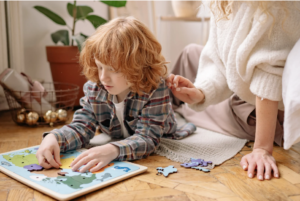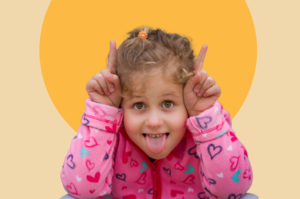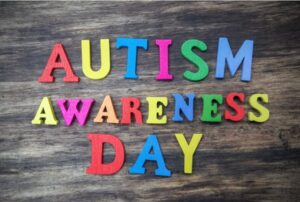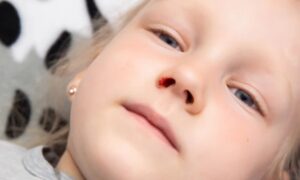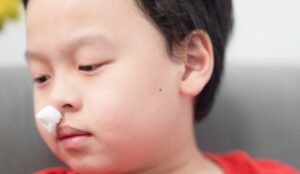Fidget toys have gained popularity as effective tools for helping children with ADHD (Attention-Deficit/Hyperactivity Disorder) channel their energy and improve focus. While these toys are often perceived as simple distractions, they can play a crucial role in enhancing concentration, reducing anxiety, and promoting sensory integration. In this article, we’ll explore the best fidget toys for kids with ADHD, highlighting their benefits and features.
Understanding Fidget Toys
Fidget toys are designed to provide sensory stimulation, allowing children to engage their hands while their minds focus on other tasks. These toys can help reduce stress, increase attention spans, and provide an outlet for excess energy. Different fidget toys cater to various sensory needs, so it's essential to find the right fit for each child.
How Fidget Toys Benefit Kids with ADHD
Fidget toys can offer numerous benefits for children with ADHD:
- Outlet for Excess Energy: These toys allow kids to release pent-up energy in a non-disruptive way, which is especially valuable in structured environments like classrooms.
- Enhanced Focus: Engaging with fidget toys can help improve concentration, making it easier for kids to pay attention during lessons or homework.
- Sensory Stimulation: Many fidget toys provide different textures and movements, catering to sensory-seeking behaviors that some children exhibit.
- Improved Fine Motor Skills: Manipulating fidget toys can enhance hand-eye coordination and fine motor skills, crucial for everyday activities.
- Stress Relief: Fidgeting can help alleviate anxiety, offering a calming effect during stressful situations.
- Promotion of Mindfulness: By focusing on a physical task, children can become more present and engaged in their surroundings.
Top 10 Fidget Toys for Kids with ADHD
Here’s a list of the best fidget toys available, each offering unique features tailored to help kids manage their ADHD symptoms effectively.
1. Fidget Cubes
Fidget cubes are small, portable devices with various buttons, switches, and dials that provide different tactile experiences. Each side of the cube offers a unique sensory activity, making it perfect for kids who enjoy variety. They are discreet enough to use in classrooms without causing distractions.
2. Chewy Tubes
Chewy tubes are designed for children who find oral stimulation helpful for focus. These safe, non-toxic chewables can help reduce anxiety and improve concentration by giving kids something to chew on instead of pencils or clothing.
3. Pop Its
Pop Its are silicone toys featuring bubbles that can be pushed and popped repeatedly. The satisfying sound and sensation can be calming for kids, making them a popular choice for sensory play. They come in various shapes and sizes, some even with game modes to keep kids engaged.
4. Tangle Toys
Tangle toys consist of interconnected pieces that can be twisted and turned into various shapes. They are excellent for sensory seekers, providing both tactile and visual stimulation. Their flexible nature allows for endless manipulation, keeping hands busy and minds focused.
5. Wikki Stix
Wikki Stix are colorful wax-coated strings that can be bent and shaped into different designs. These versatile toys encourage creativity and fine motor skills while providing a tactile experience. They’re also mess-free and easy to clean up.
6. Stress Balls
Stress balls are classic fidget toys that allow kids to squeeze, squish, and stretch. They provide resistance and can help relieve tension and stress. Look for ones filled with gel or foam for different sensory experiences.
7. Bouncy Bands
Bouncy Bands are footrests designed for desks, allowing kids to bounce their legs while sitting. This movement can help reduce restlessness and improve focus during classroom activities. They are adjustable and can fit most desks easily.
8. Fidget Spinners
Fidget spinners gained widespread popularity and can be useful for kids with ADHD. They provide visual and tactile stimulation through spinning. However, it’s essential to monitor usage, as they can become distracting in certain settings.
9. Weighted Lap Pads
Weighted lap pads offer calming pressure, similar to a gentle hug. They can help children feel grounded, making them great tools for use during reading or homework. The added weight promotes relaxation and focus.
10. Silly Putty
Silly Putty is a versatile sensory toy that can be stretched, squished, and molded into various shapes. Its unique texture provides tactile stimulation, and kids enjoy the creative freedom it offers. It can also help strengthen hand muscles.
Tips for Using Fidget Toys Effectively
To maximize the benefits of fidget toys, consider the following tips:
- Choose the Right Toy: Different toys cater to various sensory needs, so involve your child in the selection process to find what works best for them.
- Set Guidelines: Establish clear rules about when and where to use fidget toys, especially in classrooms. This helps prevent distractions while allowing for their beneficial use.
- Monitor Usage: Observe how your child interacts with their fidget toys. If a toy seems to be more of a distraction than a help, consider trying something else.
- Combine with Other Strategies: Fidget toys can be part of a broader strategy to manage ADHD symptoms. Consider incorporating mindfulness practices, structured routines, and professional support as well.
- Communicate with Teachers: If your child uses fidget toys in school, discuss it with their teachers to ensure a supportive environment that accommodates their needs.
Key Takeaways
Fidget toys can be invaluable tools for children with ADHD, providing the sensory stimulation they need to focus and thrive. By understanding the different types of fidget toys and their benefits, parents and educators can help kids manage their symptoms more effectively. The right fidget toy can not only enhance concentration but also improve overall well-being, making learning a more enjoyable experience. As you explore these options, remember that every child is unique, and finding the right fit may take some experimentation.






